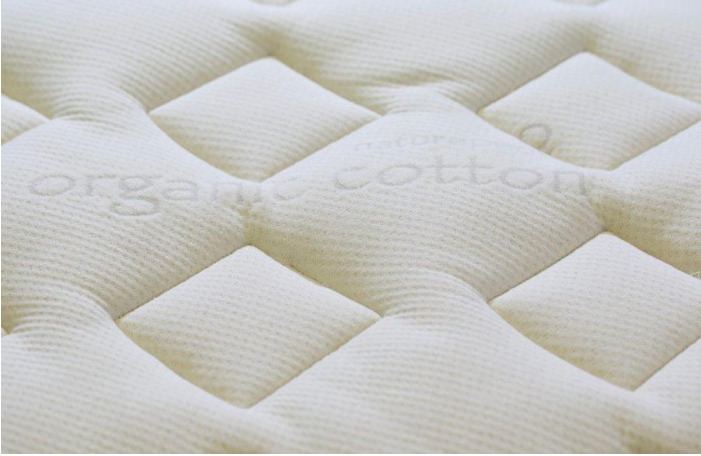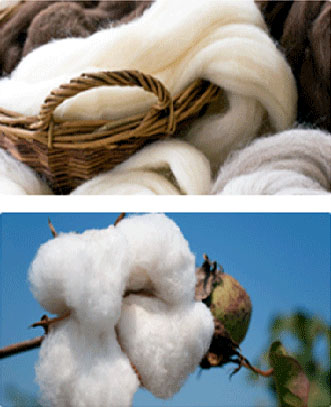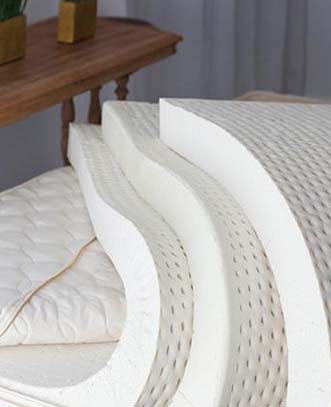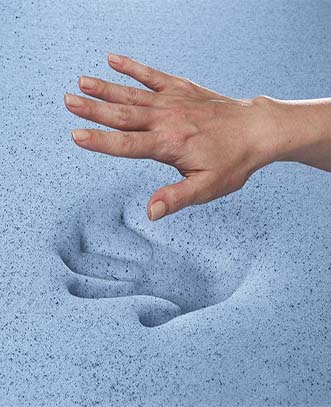Written by BRITTANY MOLLIS
Once upon a time, furniture and textiles were made using natural materials. Couches, mattresses, rugs, curtains—they all consisted of materials found in nature.
“When you walked into a house back then, almost everything was natural,” says Barry Cik, environmental engineer and co-founder of Naturepedic.
“But now? Nothing is natural.”
What changed? Where did we go wrong? Why did companies stop using natural materials?
If you’re into pointing fingers or placing blame, you can (fairly) point towards petroleum and money.
“Companies started adding petroleum to almost everything. Natural fibers aren’t nearly as flammable, but petroleum is much cheaper.”
Check out this video to see the difference between a modern home fire with petroleum-based furnishings and a legacy home fire with more natural furnishings:
Petroleum can be found in TV cabinets, plastic wood, detergents, paint, toilet seats, furniture, etc. (Click here for a list of more petroleum-based products that may shock you.)
Because it is common in so many products, America saw the introduction of flame retardants and flammability standards in the 1970s. Flame retardants are chemicals that are added to materials to slow or prevent the growth of fire.
Flame retardants can be found in (but are not limited to) these products:
– Furnishings: upholstery, mattresses, carpets, curtains
– Electronics: computers, laptops, phones, televisions,wires, cables
– Building and construction materials: insulation materials such as polystyrene and polyurethane insulation foams
– Transportation products: seats, bumpers, overhead compartments, automobiles, airplanes, trains
And while the term “flame retardant” sounds like a good idea for safety reasons, environmentalists warn that these chemicals are not safe.
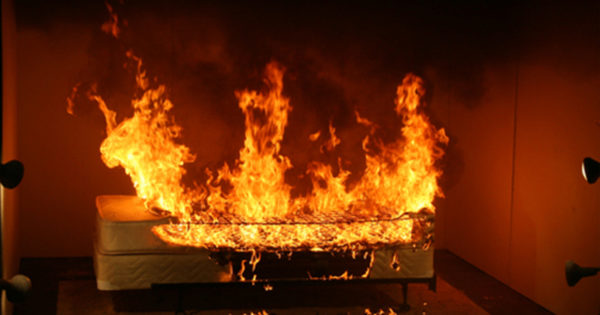
“Flame retardants are toxic and guess what? If something is on fire and you pour a gallon of gasoline on it, it doesn’t matter if there are flame retardants or not, it’s going to burn the same,” Cik says.
Cik explains that not only are flame retardants not as effective as people think, but they also off-gas, meaning they emit chemicals into the air and onto everything around them, damaging the environment and the people in it.
“Once you mess with the environment, you can’t undo it. And that also applies to people, in a lot of ways. Especially kids.”
So how do companies get away with adding flame retardant chemicals into products, knowing they are not safe?
“The chemistry rule,” Cik says, “the dose makes the poison.”
Cik explains that companies and manufacturers believe that if the dose is low enough, it’s not a poison. His counter argument? Aspirin.
“Let’s say you have a terrible headache. You take a little dose of Aspirin. Just a little, tiny dose. That tiny dose gets rid of your headache. So how low of a dose is really low?”
Cik also explains the cumulative effect of these chemicals, reminding people that maybe it won’t hurt you at first, but overtime, ingesting these chemicals will surely hurt the environment and its people.
As people are learning the true dangers of petroleum-based products and flame retardants, changes to improve our standards are coming. States are now writing and enforcing laws that ban certain flame retardants. In 2016, Washington passed a bill to ban five flame retardants. California is also making changes to previous bills to eliminate the use of specific chemicals.
Spreading awareness is the first step towards making changes. For more information about flame retardants, please visit the National Institute of Environmental Health Sciences.

